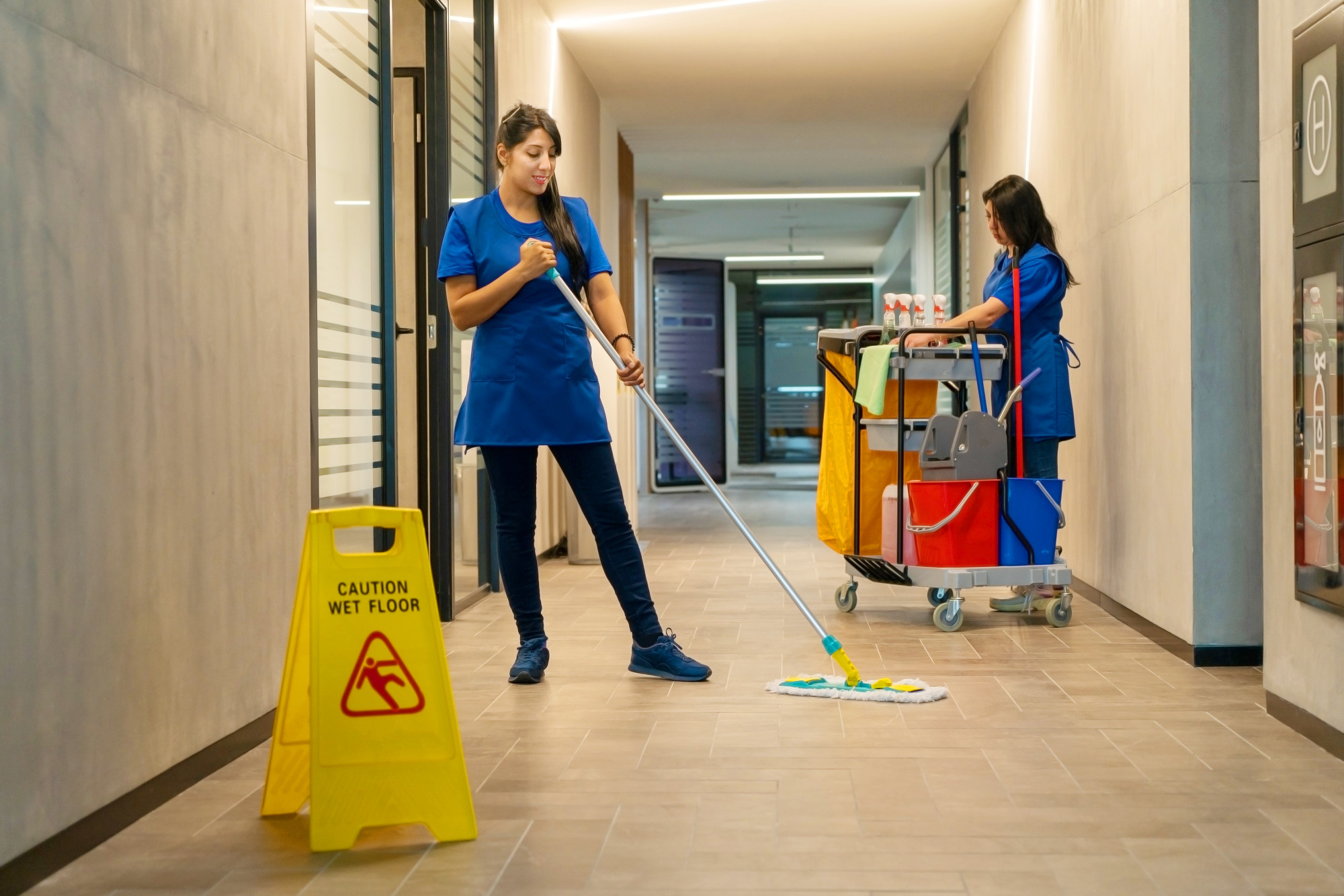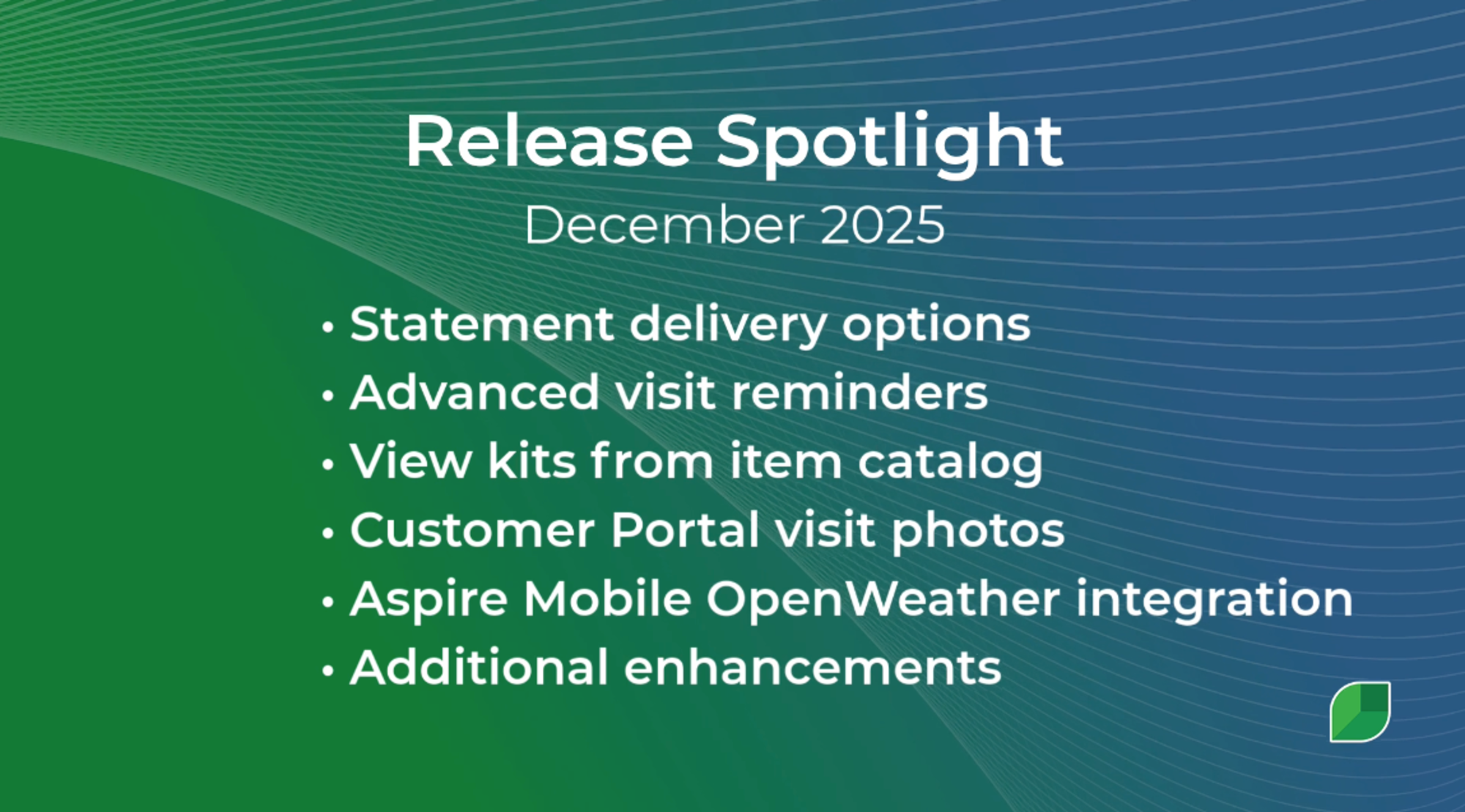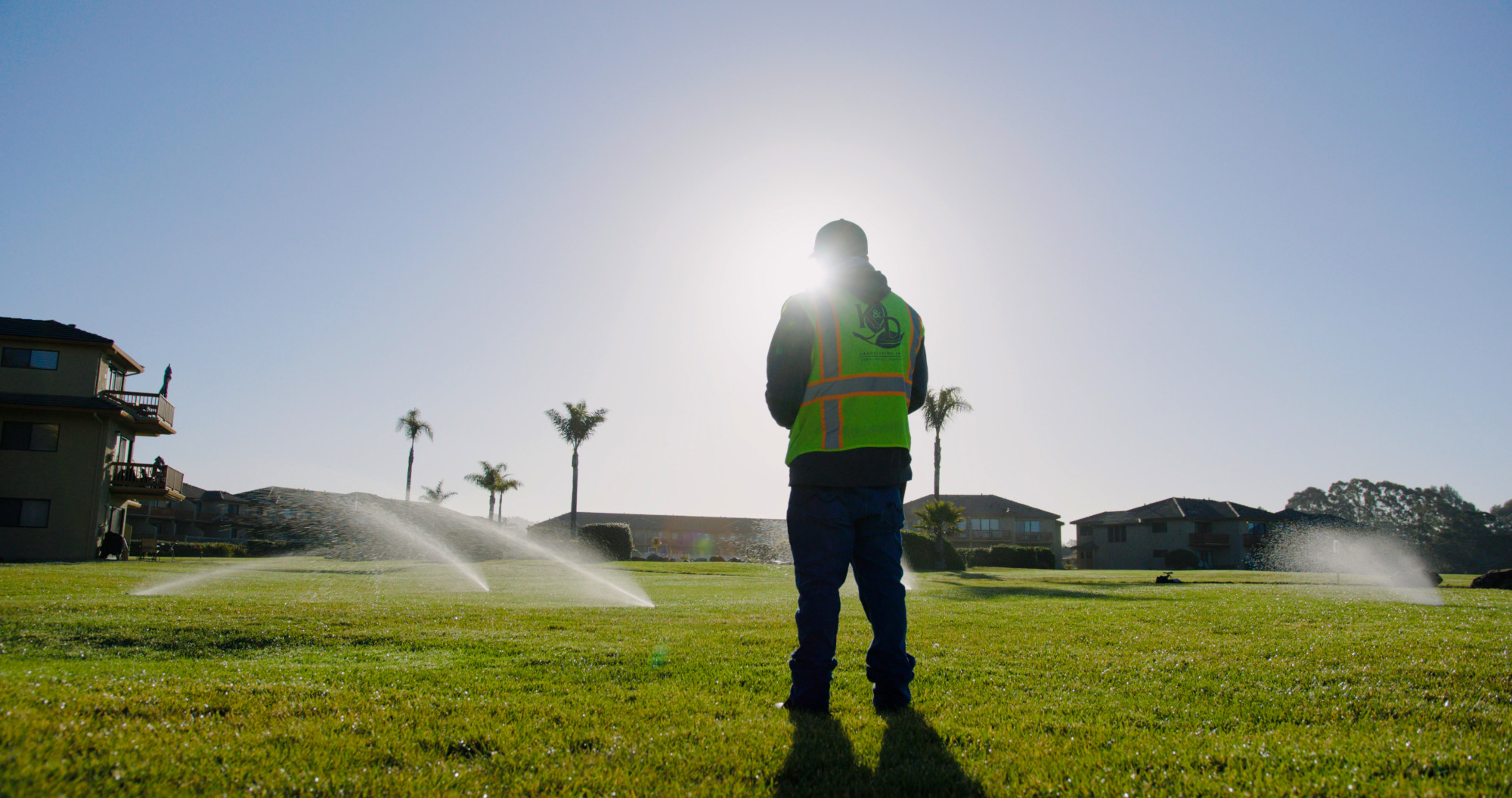As a cleaning company business owner, do you experience daily frustrations with labor management? Issues with employee turnover seem to cause the most frustration, but cleaning companies also struggle with employee recruitment, scheduling changes, productivity and efficiency, and communication issues.
“Managing your labor and workforce is critical,” says Dryden Dennis, Aspire Enterprise Account Executive. “Cleaning is a service, and our product is the people who are cleaning the buildings. If you don't have the people to do that work, or you're having high turnover and need to constantly train, then it's not efficient, and it's hurting the business.”

In a recent webinar, Dennis shares tips and tricks for understanding your workforce, the link between employee and customer satisfaction, setting up your workforce for success, how to mitigate staffing challenges and turnover, and the benefits of using operational software.
Key challenges facing the cleaning industry

According to Aspire’s 2024 Commercial Cleaning Insights Report, the top three risks facing cleaning companies today are:
Employee staffing (61%)
Customer retention (56%)
Potential economic recession (43%)

61% of cleaning companies reported employee retention as their top problem, with an average 200% turnover for the previous year, according to the insights report. Low employee retention leads to other problems, such as service disruptions, increased costs, and lower service quality.

56% of respondents reported customer retention as their biggest risk to meeting business goals. The cleaning industry depends on happy, loyal customers to maintain profitability, achieve operational efficiency, and build a strong reputation.

43% of respondents expressed concerns about a potential economic recession looming on the horizon. High inflationary costs can result in fewer cleaning customers, pricing challenges, and cash flow impediments.
Aspire also asked cleaning companies about the types of software they use and how they apply the software to various areas of the business.
“If you look at where companies are investing their money, resources, and time, you'll see that recruiting and applicant tracking, employee training and certification, and employee notifications are the least-used softwares within the industry,” Dennis says.

Recruiting and applicant tracking, for instance, is essentially a sales process, Dennis says. You’re trying to sell new hires on the idea of working for your cleaning company, and applicants are trying to sell you on their cleaning skills and expertise.
“You need to have [software] systems in place to have a pipeline of applicants and manage those applicants well,” Dennis says. “If you want to retain your staff, you need to invest in your staff, invest in recruiting, and create those systems for that to happen.”
One way to mitigate employee turnover, Dennis says, is to understand your workforce. As Stephen Covey suggests in his book, “The 7 Habits of Highly Successful People,” understanding your workforce requires treating “your employees exactly as you want them to treat your best customers."
“Happy employees create those happy customers,” Dennis says.
Understanding your workforce
Managing cleaning crews is a tough job every day. But the more you understand your workforce, the easier it is to manage. Dennis breaks it down into four areas:
What does your workforce want?
Set expectations
Follow through
Communicate
1. What does your workforce want?

What do your employees want? Do they want to work part-time to supplement their retirement income? Do they need to work full-time to pay off student loans or save for a car? What are their goals or career path? And how can you help them accomplish their goals?
Once you understand their needs, ask why they want to work for your cleaning company. Why did they leave their previous employer? Was it due to low pay or lack of recognition? How will you be different from their previous employer?
2. Set expectations

Inevitably, cleaners will miss a shift, forget to empty a trash can, or just have an off day. Set the expectations for how those issues will be resolved and how they’ll be communicated to the office and your cleaning clients.
Conducting regular inspections and creating a process for communicating complaints sets clear expectations for your staff and can even help you identify areas for further training.
3. Follow through

“In cleaning, the biggest thing is to be consistent. You want your cleaners to be consistent and to do a good job every day, day in and day out,” Dennis says. “You have to sell your service every single time you're in the building cleaning, and you only have so many instances where the customer will continue to forgive you for messing up before they hire someone else.”
To help your crews be consistent, apply the same expectations to your managers. Set up processes for managers to check in on employees and don't move the goalposts. Unlike long-term cleaning clients who may change the scope of their services along the way, employees want to work for companies that follow through with consistent management.
4. Communicate

It’s easy to fire a cleaning company you never see. It’s also easy to resign from a cleaning company if you never see or build a relationship with your manager.
“It's important to build a relationship with your cleaners,” Dennis says. “Be seen during inspections by the crew. Set it up on your calendar once or twice a month to stop by in the evening, say hi to the crew, and maybe clean a toilet or two to help them get out 10 to 15 minutes early.”
Reach out after the inspection to give recognition to the crew or conduct annual reviews with your cleaners to show them how much you value them as employees.
“Cleaning is difficult. It's a very underappreciated job, and it often goes unseen,” Dennis says. “Usually, whenever an employee is talking to a manager, it's for a complaint, and usually when a customer is talking to management, it's because of the complaint. So, it's important for us to change that narrative a little bit, to be proactive in both customer service but also with our employees.”
Link between customer and employee satisfaction

It’s no coincidence that the two biggest risks cleaning companies face are customer retention and employee retention, Dennis says, because they’re most definitely related.
“You have high turnover, then you're going to have poor quality, and that's going to result in customer turnover as well,” he explains. “There is a link between those two. It’s called, ‘The Service Profit Chain.’”

The Service Profit Chain is based on the premise that bottom-line profitability is achieved by developing customer loyalty, and a key ingredient of customer loyalty is employee satisfaction.
The idea is that profit and growth results from customer loyalty, and loyalty is the direct result of customer satisfaction. You achieve customer satisfaction by providing value and consistent service, and great service is delivered by your satisfied, loyal, and productive employees.
“The important part here is that employee satisfaction results primarily from your policies, systems, and training that enable employees to deliver results to customers,” Dennis says. “And that's on us as the managers.”
How to set up your workforce for success
Setting up your workforce for success requires:
Training
Tools
Clearly outlined job duties
Training

All cleaning crews must be trained to do the job properly.
Do they know what cleaning agents or chemicals to use for different situations or surface types?
Do they know how to mix chemicals correctly?
Are they using the right equipment for the job?
Are they using the equipment properly?
Do they know the quickest route inside the building to clean effectively and efficiently?
Do they know how to respond to customers if they receive a complaint or if the customer asks to change the scope of work?
If they get a complaint, do they know how to relay that complaint from the customer or who to relay it to?
Do they know the scope of work for that particular job to know whether the complaint or request is outside the scope?
“Even as cleaners, it's important to train in how to respond to customers,” Dennis says.
Cleaning crews also require conflict resolution training. Conflicts may arise with customers, your other employees, and even managers. Provide training on interpersonal skill management so everyone on your team knows the best way to resolve conflicts and get on with the job.
Tools

For cleaning crews to succeed, they require the right tools that are easy to use and help them do their jobs most efficiently.
Good equipment might include higher-quality microfiber rags, chemicals, vacuums, and mops. Correct equipment might include a heavy-duty vacuum cleaner for some floor types in certain buildings, while others only require mopping.
Tools for cleaning crews also include technology, like Aspire field labor management software. Equip crews with technology that makes it easy to communicate, relay complaints, clock in and clock out, and see each day’s scheduled tasks.
Assess whether your crew has the right tools by asking two questions, Dennis says.
Does the equipment slow them down or make them more efficient?
And do they enjoy using it?
Job Duties

Provide clear job duties communicated prior to the job placement.
Provide checklists so they know what to do daily, weekly, and monthly.
Give crews enough time to do the job well.
Set clear expectations for the job at hand.
“Oftentimes, when you start an account, it goes great. But after three or four months, the details start getting missed,” Dennis says.
Maybe it's knowing to do the baseboards monthly, or the window shades every other week. Do crews know when to do certain jobs? Is it on their calendar? Is it set up in a checklist for them that's easy to see?
Also, are they constantly going over on time? Or are they constantly going under on time? How are you managing that?
Did you set clear expectations? Do employees know how they're being graded? When you're conducting inspections, do they know what you're looking for?
How to mitigate staffing changes
To reduce employee turnover and mitigate staffing changes, Dennis suggests the following:
Invest in retention strategies
Improve recruitment processes
Enhance training programs
Utilize technology
Invest in retention strategies

According to Aspire’s Commercial Cleaning Insights Report, 86% of businesses plan to raise wages this year.
“This seems like a simple one but is often overlooked,” Dennis says. “It's important to keep track of what you're currently paying your cleaners and be proactive as well.”
For instance, keep track of your profitability on each account and know your margins, so you can afford to adjust pay scales or distribute bonuses.
Offer health insurance, bonuses, PTO, flexible working hours, or transportation assistance to stand out in a crowded job market.
Improve recruitment processes

Improve or create a better recruitment process for new hires. Cleaning companies with efficient hiring processes experience a 70% boost in employee productivity during the first six months of employment, and 50% experience an increase in employee retention rates.
“It starts from the beginning, the way you hire someone and train someone,” Dennis says. “It's the same with a customer. Starting off on the right foot gives you such a better chance of retaining that employee or retaining that customer.”
To improve your recruitment process, Dennis suggests the following:
Automate applicant sourcing and tracking
Use virtual onboarding tools
Use automated communication to keep applicants informed
Enhance training programs

Companies that invest in comprehensive training programs have a 218% higher income per employee than those that spend less on training.
“Setting up employees for success enables you to have higher profit in your customers and longer retention in your customers,” Dennis says.
Comprehensive training programs might include ongoing and frequent cross-training with different team members or departments.
Utilize technology

Companies using automated labor management solutions experience a 22% increase in workforce productivity.
“Use software to automate and optimize, whether it's scheduling, handling issues or complaints, or improving recruitment,” Dennis says.
Think about the processes you use to manage customer accounts or solicit new ones, then apply that same method to creating an efficient recruiting system.
“You need to have a pipeline built out, and it’s something that's repeatable, it's in place, and no matter what happens to you, you’re ready to hire someone,” Dennis says.

Start by posting the cleaning position on a job board.
Track the applicant data.
Get creative with job ad verbiage to attract new hires.
Repost the job with a steady cadence.
Create a process for conducting interviews.
Pre-hire for upcoming jobs; don’t wait until you have an opening.
“It's important to have that pool there that you can take from as needed. Whenever you do get a new job, you have a list of people you've already interviewed, they’re a great fit, and are even pre-trained and ready to go,” Dennis says.
Benefits of leveraging business management software

When cleaning companies implement business management software like Aspire’s janitorial software, they benefit from:
Increased efficiency
Reduced costs
Enhanced service quality
Better compliance with regulations
Simply optimizing your scheduling and shift management with mobile app technology can help reduce employee turnover, Dennis says. If a staff member calls in sick, you can immediately adjust the schedule and keep employees updated in real-time.

Give employees, cleaning crews, and customers a clear process for communicating issues, complaints, or special requests. And create a closed-looped communication process so everyone knows the resolution.
“This is all about being proactive and letting your employees know, and your employees being able to let you know what issues are going on and get those solved quickly,” Dennis says.

To monitor and improve performance, use technology to know what complaints are coming in and measure performance through inspections.
What's your average inspection score?
How are you keeping track of inspections?
When was the last inspection on these accounts?
“Inspections are probably one of the first things that goes whenever you have an account. You forget to inspect it, you get busy, you think the account is doing well, and you forget how important those are,” Dennis says.

Finally, consider the following key takeaways to improve your workforce management:
Understanding your employees is the key to retention.
Satisfied employees produce satisfied customers.
To mitigate staffing challenges, you have to invest.
Leveraging comprehensive software increases efficiency.
Be consistent with all of the above.








